#quadrangular
Explore tagged Tumblr posts
Text
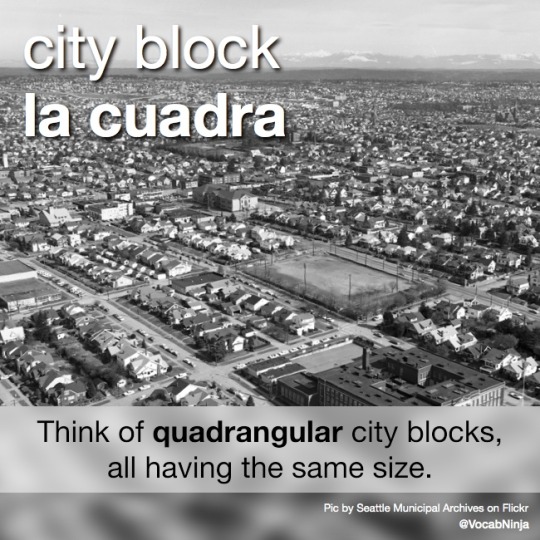
city block la cuadra
Think of quadrangular city blocks, all having the same size.
My house is five blocks away. Mi casa está a cinco cuadras.
Picture by Seattle Municipal Archives on Flickr
#block#city block#cuadra#quadrangular#spanish#vocabulary#vocab#español#hint#mnemonic#wotd#word of the day
3 notes
·
View notes
Text
youtube
0 notes
Text


...... i dont like making fun of ppl for not knowing smth but like
34 notes
·
View notes
Text

1.100 páginas de recursos: Baixe grátis o Almanaque do Mobilizador Missionário
Baixe pelo Google Drive: https://drive.google.com/file/d/1LmJRyiJJig3dSuWQkHhJauOW1si3rjOB/view
Reunindo uma grande quantidade de dinâmicas, peças teatrais, poemas, esboços de sermão/estudo bíblico e ilustrações (pequenas narrativas e textos inspirativos), o e-book Almanaque do Mobilizador Missionário se apresenta como uma magnífica ferramenta para ampliar a consciência e a ação missionárias em nossas igrejas.
A edição, que possui mais de 1.100 páginas, é GRATUITA, o que se configura como uma verdadeira bênção e motivo de celebração.
Editada pelo ministério Veredas Missionárias, a obra vem somar-se a muitas outras antologias e recursos gratuitos já disponibilizados pelo ministério.
Leia e compartilhe esta obra, para que ela chegue se possível a cada cristão/congregação de nosso país!
#culto jovem#culto de missões#mobilização missionária#missões#grande comissão#misiones#movilizacion misionera#evangelização#evangelismo#escola bíblica dominical#gospel#teatro cristão#esboços de sermão#poesia evangélica#promotores de missões#assembleia de deus#igreja presbiteriana#igreja batista#igreja metodista#igreja congregacional#igreja maranata#igreja quadrangular#congresso missionário#viagem missionária#missiologia#teologia#protestantismo
6 notes
·
View notes
Text
A ação do Dia Mundial de Limpeza das Praias em Itajuba, na Praia do Sol, foi um sucesso
A parceria entre a Prefeitura de Barra Velha, a FUNDEMA, a FUMTEC e a ACDI, mostra o compromisso das autoridades locais e das organizações com a proteção do meio ambiente e o incentivo à conscientização ambiental. As atividades realizadas, como as apresentações musicais e de capoeira, a atividade ambiental com a Polícia Militar Ambiental e a limpeza da praia e cercamento da vegetação de restinga,…

View On WordPress
#ACDI#Barra Velha#Brigada Quadrangular Itajuba#Dia Mundial de Limpeza das Praias#Escola do Mar#fumtec#Fundema#itajuba#Moto clube Insanos#Polícia Militar Ambiental
0 notes
Text
Writing Ideas: Castles

Castles, fortresses, and fortified mansions can be military and administrative headquarters for medieval feudal overlords, romantic ruins in a nineteenth century Count's estate, or haunts for ghosts… They hold our imagination, they show up in historical fiction and fantasy alike.
Types of Castles by Location
City castle. Found in the historical centre of a medieval city, and often as the core part of a larger fortification called a citadel, the urban castle houses the ruler of said city, city-state or realm of which this city is a capital.
Rural castle. Built as a standalone structure, this type of castle was more widespread than the urban castle in Western Europe. Often castles planned as standalone structures attracted folks from nearby villages and grew towns around them, eventually becoming city castles and citadels.
Types of Castles by Construction
Motte and bailey. The most primitive kind of castle, the motte and bailey is barely above a pre-medieval hill fort. It is usually just a tower or a fortified manor standing on a hill, which may be a natural hill dug over with artificial trenches and berms or a wholly manmade mound (the motte). The motte was also outfitted with extra defences such as a wooden stockade (the bailey). Often the bailey was located sideways of the motte and did not encapsulate it; the steep slopes of the motte made walls unnecessary. Note that not all castles built on mottes are motte and bailey castles: the central section of the famous Windsor Castle, which is far from being "just a tower", has a large motte under it.
Keep and curtain wall. To improve the ability of a motte and bailey castle to withstand sieges, medieval engineers went for the most obvious decision: build a solid wall instead of a wooden stockade around the motte. They built massive walls, high enough to be unscalable without proper siege ladders, and later augmented those walls with towers. The towers provided defenders a vantage point for raining arrows onto the attackers. The tower also became more fortified and turned into a keep, or donjon - the main tower or fort of the castle, a smaller fortress inside it. Even when enemies breached or otherwise surmounted the curtain wall of the castle, the keep was able to fend them off for a while, hopefully until the relief or backup forces arrives.
Moat. To add another layer of impenetrability to the curtain wall, medieval engineers augmented it with a deep ditch, or moat, around it. The purpose of the moat was to stop the attackers from breaking castle walls with battering rams and make it harder to use siege ladders. The moat was also often filled with water to stop undermining (digging under walls to make them collapse). A drawbridge or a permanent bridge could be used to cross the moat and reach the gate.
Gatehouse. Because of the moat, the castle gate became the prime target for attempts to breach the walls and break in. So the gate naturally became more fortified, built into a large, wide tower: the gatehouse. A typical gatehouse contained a lot of security measures to make battering the gate harder: corridors, portcullises, arrow slits overlooking the bridge.
Barbican. A barbican is another fortification built to protect the gate: a second, smaller gatehouse in front of it, connected to the main one with a pair of walls.
Enceinte. An enceinte is the motte, Mk.II, now made of stone! It's an inner solid stone wall surrounding the keep, making it a castle within a castle.
Concentric castle. Combining all of the above defensive measures resulted in a complex, many-layered castle with two or more sets of curtain walls and a keep surrounded with an enceinte. Such castles were built during the Late Middle Ages.
Quadrangular castle. A late development in castle building, this style does away with the keep and turns the curtain wall into a large rectangular building with a courtyard. In essence, the curtain wall is used as the outer wall of the building.
After gunpowder artillery became the main weapon of sieges, castle architecture entered into decline.
Low-profile and complex structures with thick earth walls were needed to resist artillery bombardments, and castles made way for bastions, star forts and similar fortified structures.
However, during the period of Romanticism and Gothic literature in the XIX century, interest in castles renewed.
These "revival castles" served no defensive function and were just stylized stately homes for Blue Blood elites; the most famous example of such a castle is Neuschwanstein in Bavaria, Germany.
In the 19th and 20th century, the romantic allure of castles even inspired some non-royals with deep pockets to build them as fantasy getaways.
Source ⚜ More: Notes ⚜ Parts & Types of Castles ⚜ Writing Resources PDFs
#writing reference#castle#worldbuilding#writeblr#dark academia#spilled ink#literature#writers on tumblr#writing prompt#poets on tumblr#poetry#creative writing#fiction#light academia#writing inspiration#writing ideas#theodore rousseau#writing resources
607 notes
·
View notes
Text

'The Quadrangular Passion Flower' (1802) from 'The Temple of Flora' published by Robert John Thornton.
Aquatint and stipple engraving by William Hopwood. Printed in colour with hand-colouring.
Image and text information courtesy MFA Boston.
77 notes
·
View notes
Text

A new species of Araripesuchus with durophagous dentition increases the ecological disparity among uruguaysuchid crocodyliforms
María Lucila Fernández Dumonta, Diego Pol, Paula Bona &Sebastián Apesteguía
Abstract
Notosuchia is a group of crocodyliforms with mostly terrestrial habits that lived during the Mesozoic and up to the Miocene. Within this group Uruguaysuchidae is so far represented by eight species, six of them clustered in the genus Araripesuchus. Two species of this genus, A. patagonicus and A. buitreraensis, come from different localities in Patagonia (Argentina) from the Candeleros Formation (Cenomanian age). Here we present a third species of Araripesuchus from this formation. The new species comes from the same locality as Araripesuchus buitreraensis, but differs in numerous features including the presence of different molariform teeth. The new species was included in a phylogenetic analysis and, in agreement with previous analyses, Uruguaysuchidae is recovered as monophyletic and placed within Notosuchia as the sister clade of Peirosauridae. Uruguaysuchidae includes all species of Araripesuchus as well as Anatosuchus minor and Uruguaysuchus aznarezi. The new species adds new information to the ecological diversity of the group its bulbous molariforms with a quadrangular occlusal surface bounded by mamelons is interpreted as indicative of a durophagous diet, suggesting the presence of niche partitioning between the two sympatric species A. manzanensis and A. buitreraensis.
Read the paper here:
A new species of Araripesuchus with durophagous dentition increases the ecological disparity among uruguaysuchid crocodyliforms: Journal of Systematic Palaeontology: Vol 22 , No 1 - Get Access (tandfonline.com)
#prehistoric#paleontology#reptile#herpetology#crocodilian#crocodyloform#animals#nature#south america#notosuchia
170 notes
·
View notes
Text
N's Void Cube - Animated Model
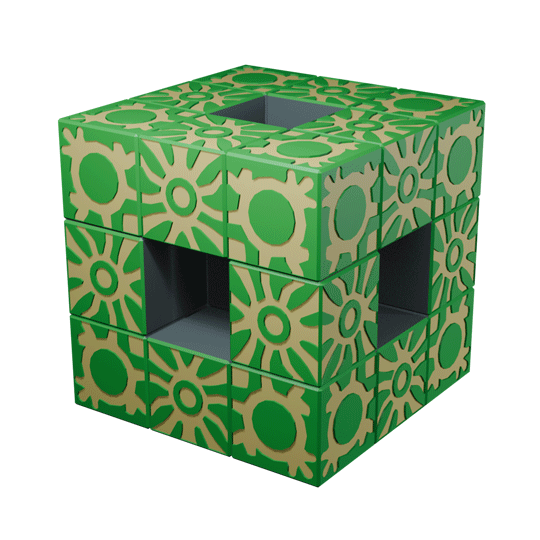
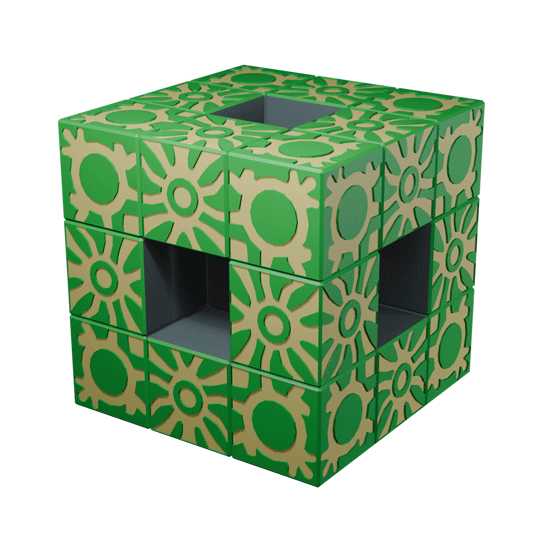
For too long, The Pokemon Company has been portraying N's iconic Void Cube with simple gold sides, erasing the beautiful quadrangular symmetry of the gold lines it was designed with. Today, I am stepping up to give N Harmonia's most prized possession the proper representation it deserves.
Here's the design I started with in Blender. I started by tracing the cube in N's official BW art, but making a new one made things so much easier.
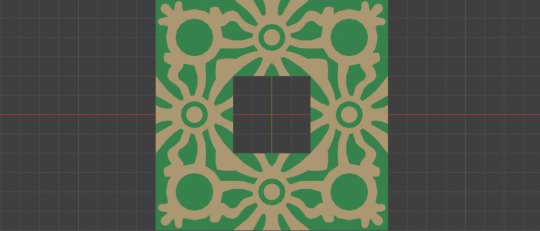
If you don't count the center, N's Void Cube is only made of two distinct blocks, just rotated in different directions. The designs on these blocks are pretty cool, and there's actually some symbolism to them!

The first block, the ring/sun, fittingly resembles the classical symbol for the sun ☉ which is also the alchemical symbol for gold. A lot of classical Sun and gold symbols often correspond with symbols for "God", considering our history of solar deities.
This symbol is also known as the circumpunct. It also resembles evil eye protection talismans like the nazar. (I figured this was relevant because of the scary eyes on Ghetsis' cloak!)
The second block, the circle symbol with the floret pointing toward the corner definitely resembles another alchemical symbol for sun, gold, and "God":

Source: utf8icons
So there's definitely a theme here! Documents from the Teraleak suggest that N is the descendant of the ancient king buried in the Abyssal Ruins. Motifs like the sun, gold, and "God" all correlate with kings and the idea of divine right.
In my post "The Original Dragon of Unova and Wuxing" I theorized that the Original Dragon of Unova is based on the Yellow Dragon of the Center, who would be a golden dragon that glows like the sun. And the machine translation for the Abyssal Ruins glyphs depicts a creature with a very Reshiram/Zekrom type body that is "known as God". This glyph is supposed to refer to the ancient king.

Source: Pokeleaks, via ImmaculateOne-Browne on Reddit
Long story short: I think N has the ancient king's Void Cube.
#N Harmonia#Natural Harmonia Gropius#N's Void Cube#N's Puzzle Cube#N Harmonia Groupius#Unova#Pokemon N#Pokemon N Harmonia#Pokemon Unova#Abyssal Ruins#Relic Castle#The Original Dragon of Unova#Teraleak#Pokemon Leaks#Pokemon Teraleak
106 notes
·
View notes
Text
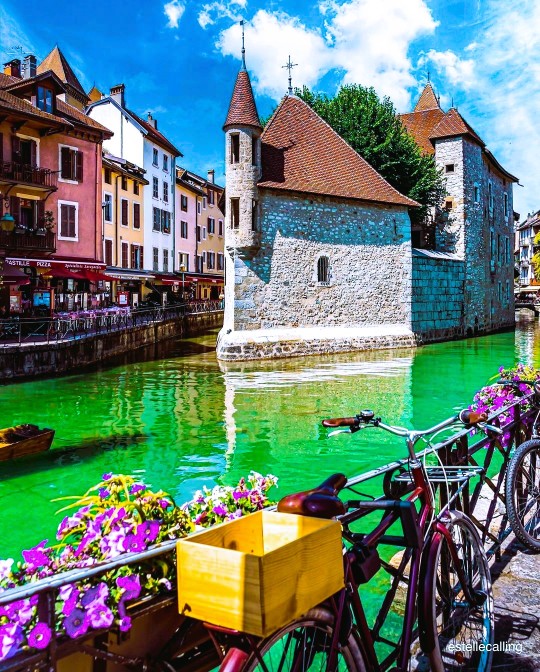
Le Palais de I'Île, Annecy, France: Listed as a historic monument in 1900, the Palais de l'Ile, often described as a "house in the shape of a ship" has been a prison, a courthouse and an administrative centre. It is an original structure, the oldest parts of which date from the 12th century. Firstly a simple quadrangular building described as a stronghold, which occasionally housed the prison and the minting workshop of the Counts of Geneva, today, the building referred to as the Palais de l'Ile is an original medieval monument: It is built on a natural rocky island... Palais de l'Isle. Wikipédia
111 notes
·
View notes
Text
I WANT TO DRAW CENTAUR HORSE CROSS SO *BAD* BUT I SUCK SO HARD AT DRAWING HORSES
Like, hear me out. This man??? He is HEAVILY associated with the royal guard. There is simply NOT ENOUGH centaur Cross.
I first though Abt making him a Clydesdale, because, y'know, they're MAJESTIC. Beautiful horses. However, I heard that, although you can ride them, they're not exactly the sort of animal ya wanna ride for much(apparently their feet"" get injured often), which, y'know, I can't picture Cross not being. They're apparently "draught" horses??
So, uh, they are more about carrying stuff. Even though the shape language would be amazing for these, because they're very robust, quadrangular, it does not quite fit.
So, uh, I found some stuff. I found stuff about "destrier horses", which were horses trained for battle, and the Wikipedia lists some breeds. There are some listed, but the one I thought coolest would be the Andalusian horse, because not only does he seem to be the one most popularly known for being a battle horse, but it is also known as "Spanish pure breed", which I thought would be nice, because it is a little callback (even if he is not Spanish, following the Sans nationality = creator's nationality thing).
The Wikipedia article also cites its use in diplomacy. I think it's a neat parallel to him being a tool to appease somebody else (after all, he is simply a result of Xgaster trying to create a perfect world for Xchara and Xfrisk).
The problem is,,, I do not know how to draw horses. Much less understand the difference between horse breeds and accentuate them.
But, uh, this is an idea. I've also been thinking about making the dream tale twins into elks because,,, it simply fits their vibe??? It would be hella cool to have apple slices, rotted away (perhaps apple cores?) stuck in his antlers, sprouting into small plants that droop low — bowing, if you will.
I also thought about minotaur Horror(or simply have something along the lines of Cross, but with a taurine body. I do not think the minotaur myth exactly fits with him, but this has never been about that tbh), simply because,,, isn't it fun when the bull is the owner of the slaughterhouse himself???? And, like, I feel like there's such fucking sick metaphors to make with that. Nobody creates carnivore animals to eat in an extensive fashion because the animal would eat more than it's worth, ultimately making for a model that does not sustain itself.
I've kinda thought about dust and Killer, but, like, there's just not enough reason in any of my choices??? I think Ram Dust is really sick, because "yes". I do not have a deep reason for it.
I,,, don't really know what to do for Killer tho, if I were to do something like that. I thought about those deer with fangs, because I think that the way that their outward display of aggression ends up being bad for them kinda mirrors Killer.
I mean, if I remember correctly, he's quite literally taken off his "powerful" eye. It's why he cannot summon gaster blasters like other sanses do, instead being able to only summon a single one.
It isn't exactly about aggression, as much as it seems to be about trill seeking.
I do know this isn't canon, but I see Killer as an absolute adrenaline junkie. Mfer wants to feel good desperately, and he will hurt himself in the process without thinking twice — he will pet the kitties, whether they give him rabies or not (maybe some days he'll understand what the scratches mean and just,,, go away. Others, he will just try to coo and insist that they are really cute).
Anyways.
I also kinda wanted to make Killer a deer because in portuguese, deer is slang for gay and I really needed to fit this joke somewhere.
I have no idea what stuff like Swap and Ink would be too,,, like, Swap might be a moose because they're close enough to elks and they're also hella bulky, and really remind me about maple syrup, but, uh, they're REALLY big. Swap ain't that big. He's a small tank. Which might bring him closer to sheep territory, but I need a sheep that is BULKY, a sheep that can pack a punch,,, but I'm not sure. Since he is usually regarded as looking fairly weak(AND HE IS WEAK AS HELL. Swap has the stats of a normal sans, but none of the benefits,, I think he has TOP NOTCH protective gear so that most hits simply do not cause any damage. He can take the weight. I also think he has a shield, and he absolutely uses that shield as a main weapon — he fights against people whose defense is attack by making his attack his defense) a sheep might work???
Ink makes me think about cows. Because of the splatters, and because cows scream unhingedness to me (miltank flashbacks), while being usually hella strong.
They're not agile, though.
Ink always felt like a monkey to me, as the closest analogy. I mean, think about him,,, just,,, it does not fit here, y'know?
I also think it would be funny.
Anyways, I ramble too much.
26 notes
·
View notes
Text
youtube
0 notes
Text
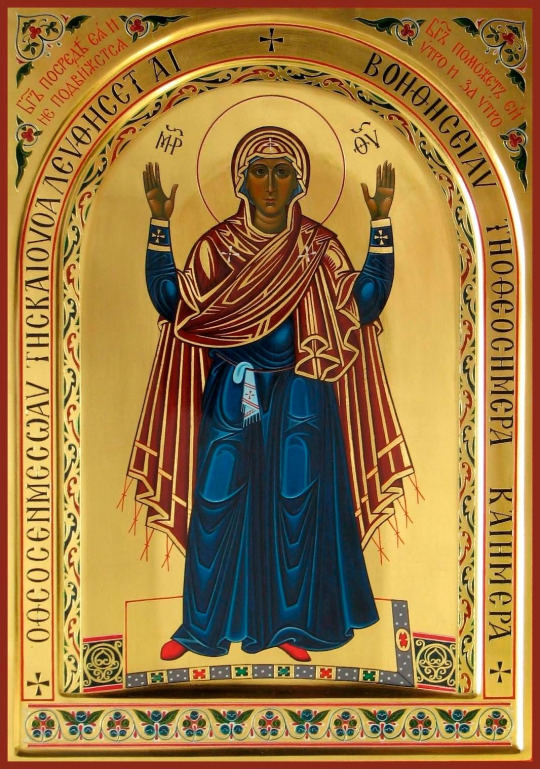
UNASSAILABLE WALL ICON OF THE THEOTOKOS
The "Unassailable Wall" Icon (also known as the "Unbreakable Wall") presents one of the most venerated depictions of the Most Holy Theotokos. This full-length representation shows the Mother of God with hands raised in prayer, portrayed without the Christ Child.
The Theotokos stands upon a golden quadrangular stone, symbolizing her role as the steadfast foundation for all who seek her intercession. A particularly touching detail is the towel at her waist - according to ancient tradition, this represents her maternal care as she wipes away the tears of the faithful.
A distinctive feature of the icon depicts the Virgin wearing priestly wrist cuffs – liturgical garments normally worn by clergy during services, here emphasizing her intercessory role before Christ, the Eternal High Priest.
This icon's name derives from the Akathist Hymn to the Theotokos, where the 12th ikos praises her as "the unassailable wall of the Kingdom."
The Church commemorates the "Unassailable Wall" icon of the Most Holy Theotokos annually on the Sunday of All Saints - June 15 this year.
8 notes
·
View notes
Text




Large pendulum representing Napoleon in Hermes, after Antoine-Denis Chaudet, in patinated and gilded bronze, in a quadrangular Campan marble base. The guilloche-bottomed dial of Leroy, Madame's watchmaker, indicates the time, minutes and date. On the side, heads of helmeted warriors; at the base, a frieze of palmettes and water leaves.
The dial is surmounted by a bust of Napoleon I, as Roman emperor, the wick returning to the forehead. Empire epoch; dated 1810 on the spring.
19 notes
·
View notes
Text

PL:
Ratusz miejski, Gniew
Usytuowany w centralnej części rynku, powstał na przełomie XIV i XV wieku. Pierwotnie stanowił czworoboczną budowlę z wewnętrznym dziedzińcem, wieżą i kramami w przyziemiu. Budynek poważnie został zniszczony podczas wojen szwedzkich w XVII wieku. Kapitalny remont ratusza za kwotę 6150 talarów wykonał w 1853 roku mistrz murarski Erich Obuch z Gniewu. Przed elewacją północną wybudowano stylowy podcień i przyozdobiono ratusz balkonem.
W 1818 roku rozebrano wschodnie skrzydło, by w jego miejscu wybudować w 1823 roku kościół ewangelicki. Skrzydło południowe i wieżę rozebrano w 1836 roku, a w ich miejscu powstały domy mieszkalne, które biorą swe początki z czasów, kiedy to wokół niego stawiano kramy z towarem na sprzedaż. Dziś do najstarszych jego części należą piwnice i przyziemie.
Przed ratuszem w styczniu 1920 roku mieszkańcy zbudowali ołtarz polowy, na którym 27 stycznia ks. proboszcz Ignacy Rosentreter odprawił mszę świętą dla żołnierzy z Frontu Pomorskiego gen. Józefa Hallera, którzy przyłączyli Gniew do Polski po 148 latach zaborów.
EN:
The Town Hall in Gniew, Poland
Located in the central part of the market square, was built at the turn of the 14th and 15th centuries. It was originally a quadrangular structure with an internal courtyard, a tower and stalls on the ground floor. The building was seriously damaged during the Swedish wars in the 17th century. A major renovation of the town hall for 6,150 thalers was carried out in 1853 by master mason Erich Obuch from Gniew. A stylish arcade was built in front of the northern elevation and the town hall was decorated with a balcony.
In 1818, the eastern wing was demolished, and in its place in 1823, an Evangelical church was built. The southern wing and the tower were demolished in 1836, and in their place, residential houses were built, which originate from the times when stalls with goods for sale were placed around it. Today, its oldest parts include the basement and the ground floor.
In January 1920, the residents built a field altar in front of the town hall, on which on January 27, parish priest Ignacy Rosentreter celebrated a holy mass for soldiers from the Pomeranian Front of General Józef Haller, who annexed Gniew to Poland after 148 years of partition.
#gniew#polska#poland#ratusz#townhall#cityhall#architektura#architecture#budynek#building#krajobraz#widok#landscape#rynek#rynekglowny#market#marketplace#marketsquare#city#town#miasto#citysquare#townsquare#square
6 notes
·
View notes
Text
Writing Ideas: Castles
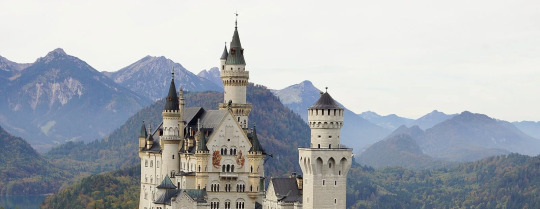
part 2
Some Castle Tropes
Big Fancy Castle: Big, elaborate, and visually impressive castles.
Bright Castle: Bright castle that signifies a good place, usually.
Good Castles, Evil Castles: Character Alignment as displayed on castle designs.
Haunted Castle: A derelict castle home to the dead or undead.
Ice Palace: A castle sculpted from ice.
Monster in the Moat: Castles with water monsters living in their moats.
Ominous Floating Castle: A visually imposing, intimidating castle floating in the sky, outer space, or an otherworldly void.
Palatial Sandcastle: A sandcastle you can live in.
Storming the Castle: A climatic assault on a fortified base.
Castles & similar structures in other parts of the world
Central and parts of Eastern Europe. Here castles weren't much different from the Western European ones. The only difference is that the local castle-building tradition was not so old; there are no Early Medieval castles in Eastern Europe, and the oldest were built during the High Middle Ages.
Russia. This country's tradition of fortification is a bit different; the rural castle never caught on here. Urban castles and citadels, called kremlins, on the other hand, were quite widespread. Kremlin is not the name of one specific famous citadel, it's a generic term for a city castle. This country also has some Romantic revival castles; these are likely to be found in rural areas.
Japan. Japanese castles, named shiro, are remarkably different in architecture from European ones, because they were built to protect the local feudal lords from local siege tactics, which differed significantly from classic medieval European sieges. Most notably, firearms found a very slow and lukewarm welcome in feudal Japan's Samurai culture, and their introduction only stimulated castle building rather than put an end to it.
The Near East. Castles were introduced to this area by the crusaders, and, were completely based on European designs. However, citadels had been common for centuries, particularly in the Levant (which had been one of the most fought-over regions in the world basically since people could write); although most surviving Middle Eastern citadels date from the Crusader period or just before, one, the Tower of David in Jerusalem, has been a citadel since the 2nd century BCE (albeit one that kept getting destroyed and rebuilt, like the rest of the city).
India. This country's equivalents of castles are called durga in Sanskrit or qila in Hindi. These words were usually translated as "forts", because they were used as army forts by the British colonial army, but they were originally castles.
Southern Africa. The castles in this region were built by the Dutch and German settlers, and aren't much different from those found in Western Europe. While the castles here aren't very old, they tend to be mimicries of the Medieval style.
Examples of Castles around the World
Neuschwanstein. The archetypical Romantic revival castle, it was built by the eccentric king Ludwig of Bavaria ("Mad King Louie" or the "Moon King") when Bavaria was actually part of the federal German Empire but retained its status as an "independent realm." Everyone might recognize this castle as the one shown in the Disney logo and copied in Disneyland parks as the "Sleeping Beauty Castle". This is not surprising, because Ludwig purposefully designed this castle as the fairy-tale castle of his dreams. It is a very popular tourist spot.
St. Michael's Castle, St. Petersburg. Another revival castle, this one is unique in many ways. First, despite being a revival castle, it had a genuine defensive function: it was built by a Properly Paranoid Russian emperor Paul I to serve as his highly secure residence. Second, it has a unique "four-sided" architecture: the four facades of this quadrangular castle show different architectural styles each, from neo-gothic and pseudo-medieval to generic XVIII century palace. It didn't serve its intended function, its owner was killed by conspirators, the castle's defensive moat was filled with ground and it was repurposed as an engineering school (hence its second name, Engineer's Castle). Currently it houses the Russian Museum of Art and is open for visitors.
Krak des Chevaliers, Syria. The archetypical Crusader castle in the Near East, one of the largest and the most well-preserved (until recently). This large concentric castle belonged to the Order of Knights Hospitaller, a famous order of knights who guarded the safety of pilgrims in the Holy Land and eventually evolved into the Sovereign Order of Malta, which still exists to this day.
Sources: 1 2 ⚜ Parts & Types of Castles ⚜ Writing Resources PDFs ⚜ Part 1
#writing reference#castle#worldbuilding#writeblr#dark academia#spilled ink#literature#writers on tumblr#writing prompt#poets on tumblr#creative writing#fiction#light academia#writing inspiration#writing ideas#writing resources
118 notes
·
View notes